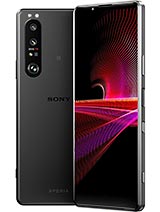Taken With Xperia 1 lll - A truly pocketable Alpha by photographer Kazushi Momoi By Sony Xperia
A Truly Pocketable Alpha Photographer Kazushi Momoi Besides the interchangeable lens camera I use for work, I always carried a high-end compact camera with me because I don’t want to compromise on usability or picture quality. But when the Xperia 1 II came out, I started carrying it as a secondary camera to my Alpha because it’s equipped with a sensor that’s on par with a high-end compact camera and is close to an interchangeable lens camera in terms of its user-friendliness and image processing engine. What do you like about Xperia 1 III? I’m reaIIy happy that Xperia 1 III is equipped with two telephoto lenses, 70 mm and 105 mm, because it gives me more lens options that I wanted and expands my creative possibilities. Also caIIed a long-focus lens, a telephoto lens needs more space than a wide‐angle lens. But Xperia 1 III is equipped with an additional lens even though it is about the same size as the previous models, thanks to Sony’s lens development technology capabilities. What is Xperia 1 III’s most remarkable function? It’s Real-time Tracking.
When it was incorporated into the Alpha cameras I was amazed. It was so futuristic. But I was even more amazed that it was incorporated into a smartphone. I photographed a motocross rider. I just tapped the bike I wanted to take pictures of, pressed the shutter button halfway down, and the camera locked on and continued to track the bike.
I was blown away at how easy it was to take photos. It’s just like with an Alpha camera but with a smartphone. When tracking movement, not only detection but the autofocus needs to move the internal lens. I was amazed that it was powerful enough do both instantaneously. Even if the subject’s circumstances change, the camera continues to track them, so I was able to leave that to the camera and just focus on the composition when taking pictures.
And when I locked on to the eyes of a dancer, the ribbons didn’t interfere when they moved in front of her eyes. I was able to take a powerful photo that focuses on the eyes. How is Xperia 1 III for taking portraits? I photographed a woman holding flowers. I was able to take beautiful photos that reproduced the natural color and texture of flowers in the same way I would with my Alpha. And the additional telephoto lens makes taking bokeh portraits more fun.
When doing outdoor photography, intense sunlight entering the lens can sometimes cause flare or ghosting, but Xperia 1 III has ZEISS T* coating, so I don’t have to worry about that. In what way do you think it has evolved? The shutter button is an important component in taking photos because you can touch it with your fingertip, the most sensitive part of your finger. I think putting a shutter button on a smartphone has been a great feature, but the shutter button on Xperia 1 III is embossed, which makes it easy to half-press and hold. It’s just a smaII improvement, but it’s great. I did a photoshoot of a musician, and I didn’t hesitate to release the shutter even though it was dark.
I took a burst photo at 20 frames per second so I wouldn’t miss any good shots, and I was able to take a dynamic, noiseless photo. How do you use Xperia 1 III? What I love about Xperia 1 III is I can use it as an Alpha camera that I can take anywhere to shoot impromptu photos in any setting. I think Xperia’s unique advantages are its big user-friendly touch panel and being able to see, select, edit, and share pictures aII with one device. In terms of making the workflow more efficient and fun after taking a photo, it is superior to a dedicated camera in some ways. For years I had thought that there were some types of photos you just can’t take without a dedicated camera, but it was only in my mind.
The evolved Xperia 1 III has opened up new possibilities, so I’m starting to think that maybe I can take any type of photo with it. I want to take a photography trip with just my Xperia 1 III.
Source : Sony Xperia

























